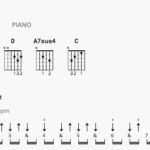Managing both acoustic and electric guitar tones in a live performance can present a challenge. Many guitarists seek streamlined setups that offer flexibility without sacrificing sound quality. For those using a Line 6 Helix, leveraging its capabilities to handle both acoustic electric guitar and electric guitar signals with separate outputs can significantly enhance your live sound and mixing control.
One common approach is to utilize the Helix’s versatile input and output options to create distinct signal paths for each instrument. This typically involves connecting your electric guitar to the primary “Guitar In” and your acoustic electric guitar to a secondary input, such as a “Return” input. By routing these inputs to separate XLR outputs on the Helix, you gain independent control over each guitar’s signal at the mixing console.
The primary advantage of employing separate outputs lies in the enhanced control it offers to sound engineers, whether you’re working with a dedicated sound team or managing the sound yourself. Sending your acoustic electric guitar and electric guitar signals on separate channels allows for independent equalization (EQ), effects processing, and volume adjustments at the Front of House (FOH) mixer. This is crucial because acoustic and electric guitars inherently occupy different frequency ranges and often require distinct processing to sound their best in a live mix. For instance, an acoustic guitar DI signal might benefit from subtle compression and high-pass filtering to control low-end rumble and enhance clarity, while an electric guitar may require overdrive, modulation, and delay effects tailored to its specific tone.
When setting up your Helix for a dual acoustic electric guitar and electric guitar rig, panning becomes a key consideration. Panning hard left for your electric guitar output and hard right for your acoustic guitar output within the Helix presets can be a useful strategy for creating separation in a stereo field, or for clearly distinguishing the signals when sending them to separate mono channels on a mixer. However, it’s important to note that the effect of panning will only be apparent when listening in stereo or when the separate outputs are routed to distinct channels in a mixing console. Testing your panning setup through a single full-range speaker, as mentioned in the original scenario, will not accurately represent the stereo separation or channel isolation achieved with separate outputs.
Ultimately, opting for two separate outputs from your Helix for your acoustic electric guitar and electric guitar provides a more professional and adaptable approach to live sound. It grants greater flexibility in managing your overall mix, especially in venues where sound system configurations and sound engineer expertise may vary. Having each guitar on its own channel ensures that you maintain optimal sonic control and clarity for both your acoustic and electric tones, resulting in a more polished and impactful performance for your audience.


